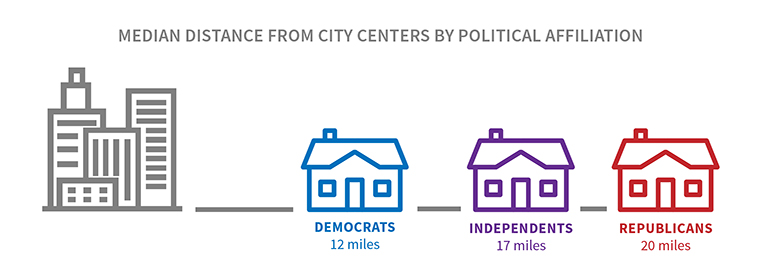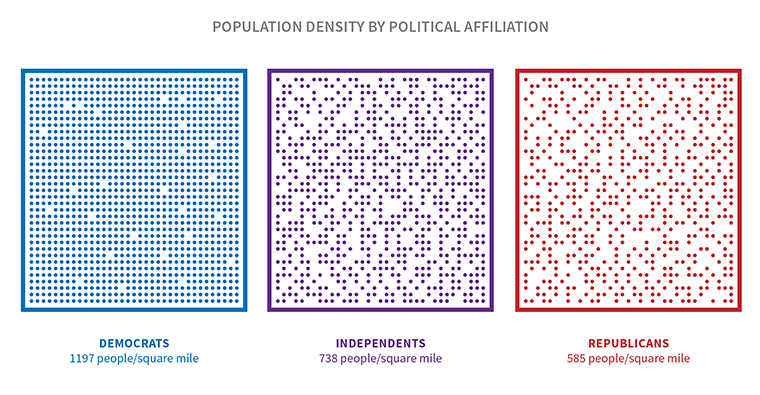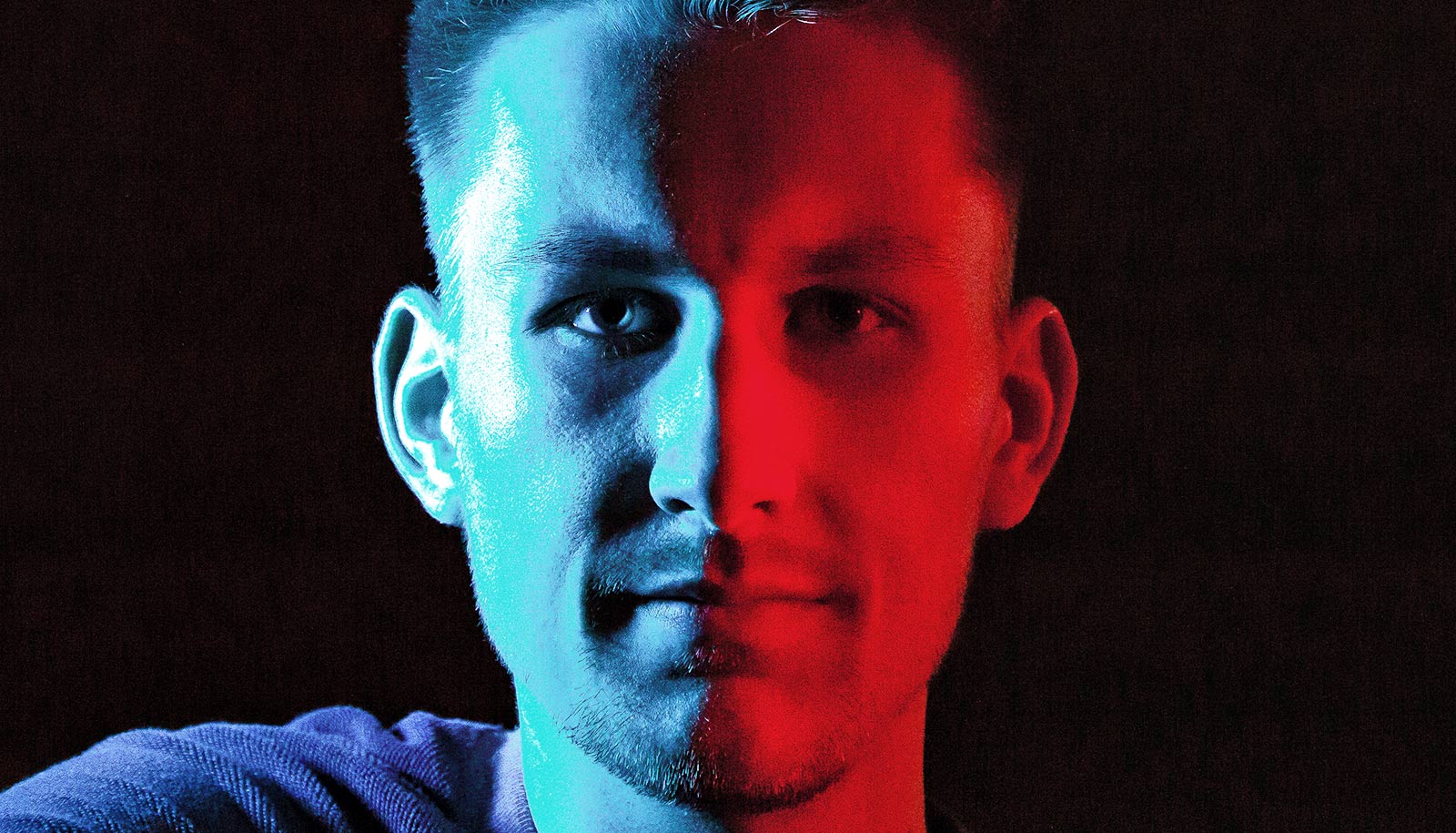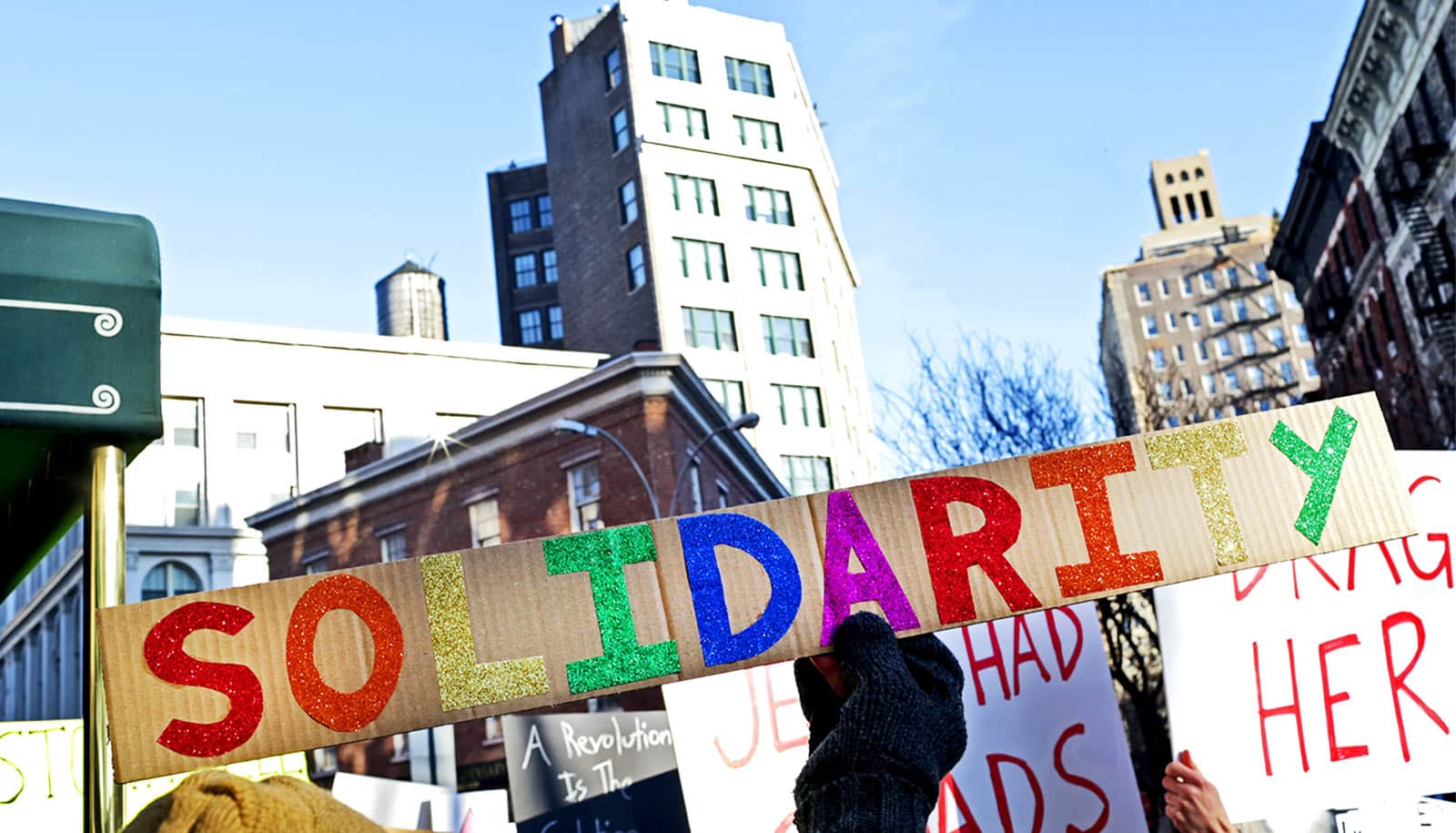How close people live to bigger cities shapes their politics, according to a new study.
The researchers, using Gallup survey data between 2003-18, found evidence that the urban-rural political divide—more noticeable and decisive in recent elections—is rooted in geography and not merely differences in the type of people living in these places.
“…we tend to overlook how the social environment—outside of race, gender, and income—plays a role in our partisan identity.”
How close people live to a major metropolitan area, defined as cities of at least 100,000, and their town’s population density play a significant role in shaping their political beliefs and partisan affiliation.
“Urban-rural differences in partisan political loyalty is as familiar in the United States as they are in other countries,” says coauthor Andrew J. Reeves, associate professor of political science at Washington University in St. Louis.
“The general consensus has been that the origins of this divide lie within the personal characteristics of the people who live in rural or urban communities. However, our research found that the explanation was not that simple.”

Geography and partisanship
In their research analysis, Reeves and Bryant J. Moy, a PhD candidate in the political science department, along with two University of Maryland coauthors, found that geography is related to substantial differences in partisanship even after accounting for a host of individual traits like age, race, gender, education, and religious adherence.
For instance, holding all other individual characteristics constant, an individual’s probability of identifying as a strong Democrat drops by 12 percentage points if they live in a far rural area. Likewise, their analysis suggests that a person living in a densely packed community is about 11 points more likely to identify as a strong Democrat compared with that same person living in a sparsely populated area.
“On the one hand, our findings should not surprise anyone. Life experiences shape our perceptions of the world. On the other hand, we tend to overlook how the social environment—outside of race, gender, and income—plays a role in our partisan identity,” Moy says.
“And that is the main takeaway from our research. The environment around us—the distance we live away from a metropolitan area and population density—shapes what we think about the political world and the partisan labels we adopt.”

In terms of distance from a large metropolitan city, their analysis showed that, on average, Republicans lived 20 miles from a city, while independents lived 17 miles away and Democrats lived 12 miles away.
The physical urban-rural gap was smaller among racial and ethnic groups and those who have higher education and higher income. Among college degree holders, Republicans lived 17 miles from the city while Democrats lived 10 miles from the city. Hispanic Republicans lived nine miles from the city while Hispanic Democrats lived seven miles from the city. Although the gap was smaller among these subgroups, it was still significant enough to be decisive in a closely contested race.
Urban-rural divide in politics
Small towns have always been conservative-leaning. People living in rural areas tend to have traditional values and be resistant to new ideas, Reeves says.
“In rural, less populated areas, residents are more likely to know one another and talk with their neighbors. Those interpersonal relationships are highly influential and can create a social pressure to conform,” he says.
“There also is a lot of resentment on the part of rural residents toward urban communities. There is a common perception that cities receive more than their fair share of resources and look down on rural communities. The media helps enforce these beliefs with news coverage that predominantly focuses on big cities and the interests of urbanites.”
In contrast, large, heavily populated cities have traditionally been more open to liberal ideas and more accommodating toward unconventional behaviors and beliefs. City dwellers have a greater opportunity to interact with diverse people, which fosters tolerance. They also have the ability to be anonymous, which encourages respect for people’s privacy.
According to Reeves, one might come to the conclusion that people choose to live in urban or rural communities based on their values and political beliefs, but recent research suggests that a small share of movers consider political factors directly in their decision-making process.
“There is a striking and significant association between geography of residence and party identification,” Reeves says. “In both urban and rural settings, geography and population density seem to exert a socializing impact on partisan identification while perhaps also serving as a draw for movers seeking a fitting and compatible destination.”
These findings have implications in the 2020 election and beyond, Reeves says.
“As we have long known, Democratic voters tend to pack themselves into cities, which is inefficient in terms of winning seats or electoral college votes,” he says. “Look at Missouri, for example. St. Louis, Kansas City, and Columbia are blue and then the rest of the state is red.
“By virtue of how we elect our members of Congress and even our president, Democrats are at a disadvantage, and it might only get worse based on the type of campaigning we see going in the primaries.
“Many of the Democratic candidates are leaning further to the left. This is not going to win over the rural voters who are more resistant to progressive ideas. The Democratic party is going to be at an increased electoral disadvantage if they decide they want to be the party of the urban progressive.”
The paper will appear in Political Behavior.



